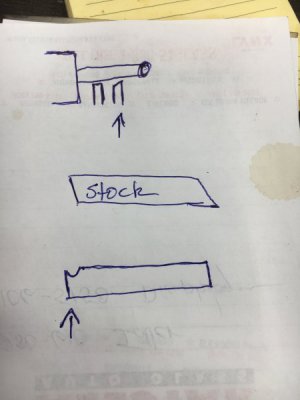I have just started using my first lathe. I have played with some 1/2” mild steel rod. I have turned 20 or so thousands to true up, I faced, drilled it out about 280 thou, beveled some edges, put a 30 degree bevel on it going into the drilled hole. All that went well considering it was my first attempt at playing. When I got to parting off, it did not go so well. It was a new blade, it was a Arthur Warner blade and holder, I used a thread cutting lube, kept it wet. I ran it about 250 rpm. It did not cut well at all, I applied more pressure, it cut in about 150 thou before the blade broke. I got another type of blade, it’s 1/2” top to bottom, 4” long and the type that has the kind of “T” contour. It did not do any better but I stopped before I applied too much pressure. I forgot to add I only have enough stick out to reach the center of the material. I have it 90 degrees to the material I’m trying to part off and the cutting edge is centered vertically as close as possible. Any ideas what I am doing wrong? How much pressure should I have to apply?
Thanks in advance


